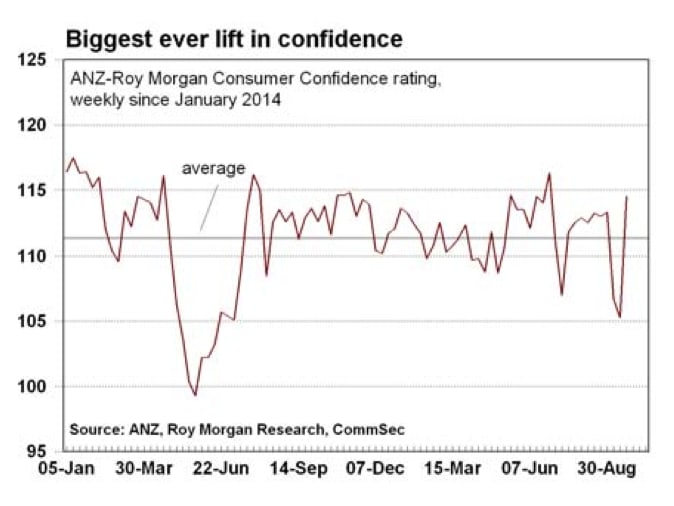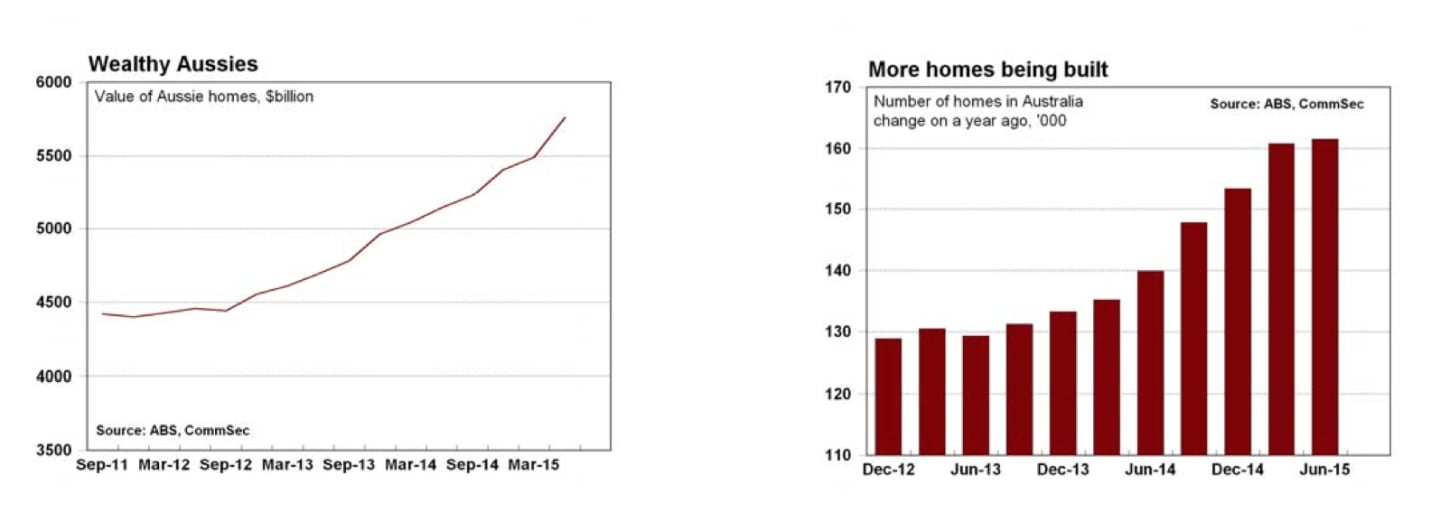Biggest weekly lift in consumer confidence: CommSec's Craig James
GUEST OBSERVER
The Government leadership change would have been the main factor influencing consumer confidence last week. Other factors include a 2% lift in the sharemarket; stabilisation of the Aussie dollar near US71-72 cents; positive testimony on the economy by the Reserve Bank Governor; and the decision of the US Federal Reserve to leave rate settings unchanged. All these factors would have played a role in the rebound of consumer confidence.
More confident consumers are more likely to spend, but there are no guarantees. But as the Reserve Bank Governor observed, the most important of the five questions posed to consumers each week are those relating to household finances. And even before the latest survey, consumers had an above-average assessment of the state of their household finances compared with a year earlier.
The Bureau of Statistics confirms that Sydney’s property market is the exception, not the rule. While Sydney’s average home price was up 18.9% over the year – the fastest rate in the 12-year history of the series – Melbourne prices were up 7.8%and the average gain of other capital cities was just 1.2%. Sydney is witnessing a building boom and home prices will be more settled in 12-18 months.

What do the figures show?
Consumer sentiment
The weekly ANZ/Roy Morgan consumer confidence rating rose by 8.7% 114.5 in the week to September 20. Confidence is up 1.4% over the year and 2.7% above the average level of 111.5 recorded since 2014.
All of the five components of the index rose in the latest week:
- The estimate of family finances compared with a year ago was up from +7 to +10;
- The estimate of family finances over the next year was up from +21 to +27;
- Economic conditions over the next 12 months was up from -18 to +3;
- Economic conditions over the next 5 years was up from -3 to +10;
- The measure of whether it was a good time to buy a major household item was up from +20 to +23 points.
Residential property prices
The Bureau of Statistics (ABS) has released its Residential Property Price indexes.
"The price index for residential properties for the weighted average of the eight capital cities rose 4.7% in the June quarter 2015. The index rose 9.8% through the year to the June quarter 2015.
The capital city residential property price indexes rose in Sydney (+8.9%), Melbourne (+4.2%), Brisbane (+0.9%), Adelaide (+0.5%) and Canberra (+0.8%), was flat in Hobart (0.0%) and fell in Perth (-0.9%) and Darwin (-0.8%).
Annually, residential property prices rose in Sydney (+18.9%), Melbourne (+7.8%), Brisbane (+2.9%), Canberra (+2.8%), Adelaide (+2.7%) and Hobart (+1.5%) and fell in Darwin (-1.8%) and Perth (-1.2%).”
The ABS notes that as at June 2015 there were 9.53 million homes in Australia and the average price was $604,700. The number of homes has risen by 1.72% over the past year, ahead of the 1.42% growth of the population. But the number of homes in Sydney is up 1.3% whereas as homes in Victoria is up by 1.9%.
CommSec estimates that the increase in the value of homes has boosted per capita wealth by just over $26,000 over the past year. Also we estimate that the number of people per home fell from 2.501 to a 3-year low of 2.498 people per home in the June quarter.

What is the importance of the economic data?
The ANZ/Roy Morgan weekly survey of consumer confidence closely tracks the monthly Westpac/Melbourne Institute consumer sentiment index but the former measure is a timelier assessment of consumer attitudes and is now closely tracked by the Reserve Bank.The Australian Bureau of Statistics (ABS) provides quarterly data on residential prices. The figures provide further perspectives on the state of the housing purchase sector.
What are the implications for interest rates and investors?
The latest consumer confidence data just reinforces the Reserve Bank view. Even before the latest survey, the RBA noted that views on family finances were above average and supporting consumer spending. The lift in the value of Australian homes has further boosted wealth levels in Australia, and may underpin future spending.Are more Gen Y children moving out of home into their own places? Perhaps. The latest data indicates that the number of people per home fell to a 3-year low in the latest quarter. Low interest rates and low rent levels have encouraged more young people to get their own homes, either singularly or sharing accommodation with others.

Craig James is the chief economist at CommSec.
